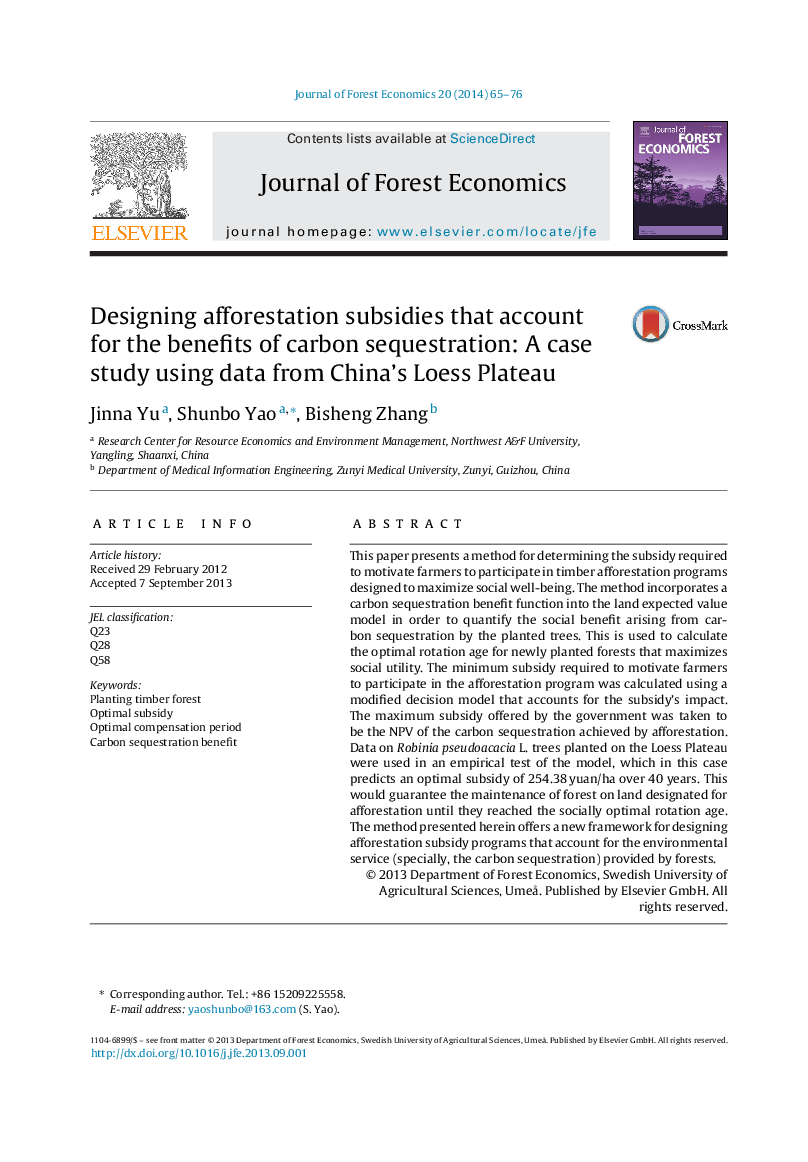| کد مقاله | کد نشریه | سال انتشار | مقاله انگلیسی | نسخه تمام متن |
|---|---|---|---|---|
| 91820 | 159850 | 2014 | 12 صفحه PDF | دانلود رایگان |
This paper presents a method for determining the subsidy required to motivate farmers to participate in timber afforestation programs designed to maximize social well-being. The method incorporates a carbon sequestration benefit function into the land expected value model in order to quantify the social benefit arising from carbon sequestration by the planted trees. This is used to calculate the optimal rotation age for newly planted forests that maximizes social utility. The minimum subsidy required to motivate farmers to participate in the afforestation program was calculated using a modified decision model that accounts for the subsidy's impact. The maximum subsidy offered by the government was taken to be the NPV of the carbon sequestration achieved by afforestation. Data on Robinia pseudoacacia L. trees planted on the Loess Plateau were used in an empirical test of the model, which in this case predicts an optimal subsidy of 254.38 yuan/ha over 40 years. This would guarantee the maintenance of forest on land designated for afforestation until they reached the socially optimal rotation age. The method presented herein offers a new framework for designing afforestation subsidy programs that account for the environmental service (specially, the carbon sequestration) provided by forests.
Journal: Journal of Forest Economics - Volume 20, Issue 1, January 2014, Pages 65–76
